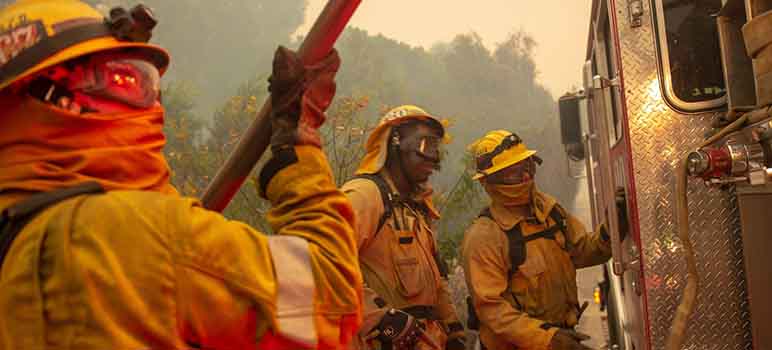With hotter temperatures and drier seasons, Bay Area wildfires are becoming more intense—and this upcoming fire season will likely be no different.
"Without a doubt the worst wildfires on record were in 2020, and that came on the heels of the worst wildfires on record in 2019 and before that 2018," Cox said.
There is a chance the 2021 fire season will not break records, but Cox said it's unlikely. It could happen, however, if the summer were relatively cool with little wind.
"But if we do get anomalous weather events or a high number of wind or lightning events like last year, then I think we can expect to have an increase in the number and size and scope of the fires," Cox said.
He said in the Bay Area specifically, wind has been a major factor in the spread of wildfires, especially in the last five years.
That means the region is most vulnerable to the flames in September, October and even late November, when the Bay Area has higher winds.
Cox pointed to the October 2017 Tubbs Fire that burned 36,807 acres in Napa, Sonoma and Lake counties and the Camp Fire, which was the most destructive in state history, claiming 85 lives and burning 153,336 acres in Butte County in November 2018, as examples of wind accelerating the blazes.
In the Bay Area, fire season typically lasts from late June to October, but with the impact of climate change, fires are occurring throughout the year.
Already, the state has seen 900 more wildfires than at this point in 2020, which broke wildfire season records when it scorched more than 4 percent of the state's land.
For the Bay Area, wildfire season kicked off in the beginning of May, Cox said.
"We're going to our peak staffing level for our seasonal staff on June 1, which is basically a month ahead of where we would normally be for staffing," Cox said.
He also said Cal Fire has hired more seasonal firefighters this year than ever before -- at least 1,400 additional firefighters.
"I think we're all anticipating another busy fire season," Cox said. "The fact of the matter is the vegetation is very dry so that's less of a threat for the grasses, but for our heavier fuels like our heavier brush and our timber -- we are very concerned."
For those living on hillsides with low grasslands, the fire risks are not as serious as for those living in densely populated communities near forests, or hillsides of brush and timber.
In the Peninsula, the areas of concern are always "all those interfacing communities," from Burlingame, Belmont and Woodside over to El Granada, Cox said.
And in the South Bay, most threatened areas are Los Gatos, the upper Palo Alto area and Saratoga. Parts of Morgan Hill and Santa Clara County's east foothills near Alum Rock also have a high-severity risk for wildfires.
"Basically, if you look at the rim of the Bay Area, any community that's in and around that rim of the Bay Area's mountain range in some degree has some elevated risk for wildfire," the deputy chief said.
He said Cal Fire and other fire departments are doing all that they can do prepare for the wildfire season again, including some but not many prescribed burns.
For the most part, Cal Fire is the agency that comes in after disaster strikes.
Cox said it is up to residents to make sure their home and family are as defensible as they can be in the threat of fires this summer.


¡Hola! Quería contarles sobre mi experiencia con los depósitos en https://melbet-chile.com/deposito/ Chile. Lo que más me ha impresionado es la seguridad y la rapidez del proceso. Desde el momento en que eliges tu método de pago hasta que el saldo aparece en tu cuenta, todo ocurre de manera fluida. Usar las billeteras electrónicas y las criptomonedas ha sido especialmente conveniente para mí, ya que permiten una transacción rápida y sin problemas. Si buscas una plataforma confiable y fácil de usar para tus depósitos, ¡Melbet Chile es una excelente opción!